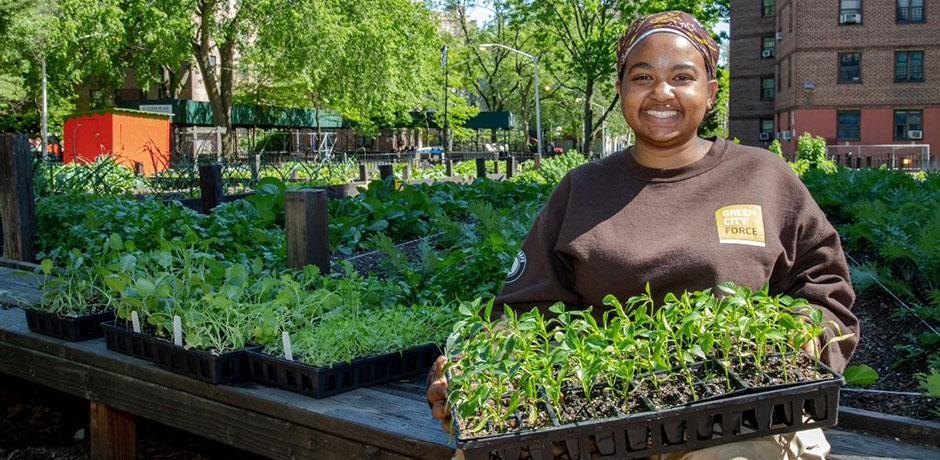The Ultimate Guide To City Blooming
How City Blooming can Save You Time, Stress, and Money.
Table of ContentsThe Ultimate Guide To City Blooming10 Easy Facts About City Blooming DescribedCity Blooming for DummiesThe Main Principles Of City Blooming Some Of City Blooming
Interested in growing food up for sale in the City of Chicago? Considering beginning a neighborhood yard? Adjustments to the Chicago Zoning Regulation allow farming usages like neighborhood gardens and metropolitan farms in numerous components of the city. Below is a checklist of often asked concerns regarding the guidelines and policies that cultivators should take into consideration when planning an urban agriculture project.
The zoning change does not change any type of various other codes managing composting, building licenses, acquiring or renting City owned residential property, organization licenses or environmental contamination. There are existing codes that control these concerns and they remain completely impact and may apply to your project. Community yards are normally owned or taken care of by public entities, public organizations or community-based companies and preserved by volunteers.
Urban ranches grow food that is intended to be offered, either on a nonprofit or for-profit basis. As a result of their commercial purpose, metropolitan ranches require a business permit. Yes. A community yard is allowed to offer excess generate that was expanded on website if the sales are accessory or subservient to the yard's primary function described over.
Rumored Buzz on City Blooming
Composting is enabled yet only for plant material that is generated and made use of on website. The quantity of compost product can not go beyond 25 cubic lawns at any provided time according to the criteria in 7-28-715 of the City's Municipal Code. Yes. Because the soil at most brand-new garden websites needs amending, compost, dirt, timber chips, or various other materials can be acquired to create or boost the expanding area - indoor plants.

If a building authorization is needed then the hoophouse will certainly be thought about an accessory building. You can figure out more about the structure authorization requirements by calling the Division of Buildings. The 25,000-square-foot size limit is intended to avoid a solitary area yard from dominating an offered block or diminishing the block's existing residential or business character.
The limit does not put on gardens situated in Public Open Space (POS) areas. Can there be greater than one neighborhood garden that is 25,000 square feet on a solitary block? Yes. The size limit relates to private gardens, not to private blocks. No. Fence is not needed, however, gardens that have big car parking areas may be needed to install secure fencing or other landscape design features.
What Does City Blooming Do?
B1 & B2 areas require that all industrial use activities be conducted indoors. R districts restrict business task. The laws mirror the purpose and intent of the Zoning Code. Is fencing required for urban farms? Yes. Fences may be required, along with landscape design and testing, for certain parking locations and outdoor work or storage areas depending upon area and the particular task occurring.
Urban farms need building licenses and zoning approvals prior to construction (fruit and vegtables). Other forms of city review may be called for depending on particular frameworks, activities, size, landscape design, licensing, public health and stormwater monitoring issues.
The Division of Service Affairs and Consumer Protection can help determine the specific kind of service license that's needed. Off road auto parking is needed for the majority of business tasks in Chicago. The called for number of car parking areas is based on the number of staff members functioning on website and not the square video of the expanding room.
The Main Principles Of City Blooming

Yes. A metropolitan ranch can offer compost product produced on website, nonetheless, the procedure must follow the guidelines in 7-28-715 of the Chicago Municipal Code. Yes. Aquaponic systems are permitted inside on city ranches in several zoning areas. A zoning testimonial and structure authorization is called for in order to set up frameworks or systems and a service permit is required as described above.
Approximately five hives or colonies of honey bees may be maintained as an accessory usage. Nonetheless, beekeepers need to register with the Illinois Division of Farming. For additional information regarding the proposed zoning modification you may get in touch with the Department of Real Estate and Economic Advancement, Bureau of Preparation and Zoning at 312.744.8563.
, which takes place in rural areas at the side of residential areas.
The smart Trick of City Blooming That Nobody is Talking About
It can involve an activity of organic growers, "foodies" and "locavores", that seek to create socials media based on a common ethos of nature and area holism. These networks can establish using official institutional support, coming to be integrated right into regional town as a "change community" motion for sustainable city development.
The a lot more straight accessibility to fresh vegetable, fruit, and meat products that may be become aware More Info through metropolitan farming can boost food safety and security and food safety and security while reducing food miles, leading to lower greenhouse gas discharges, therefore contributing to environment adjustment reduction. Several of the first evidence of urban agriculture comes from Mesopotamia.